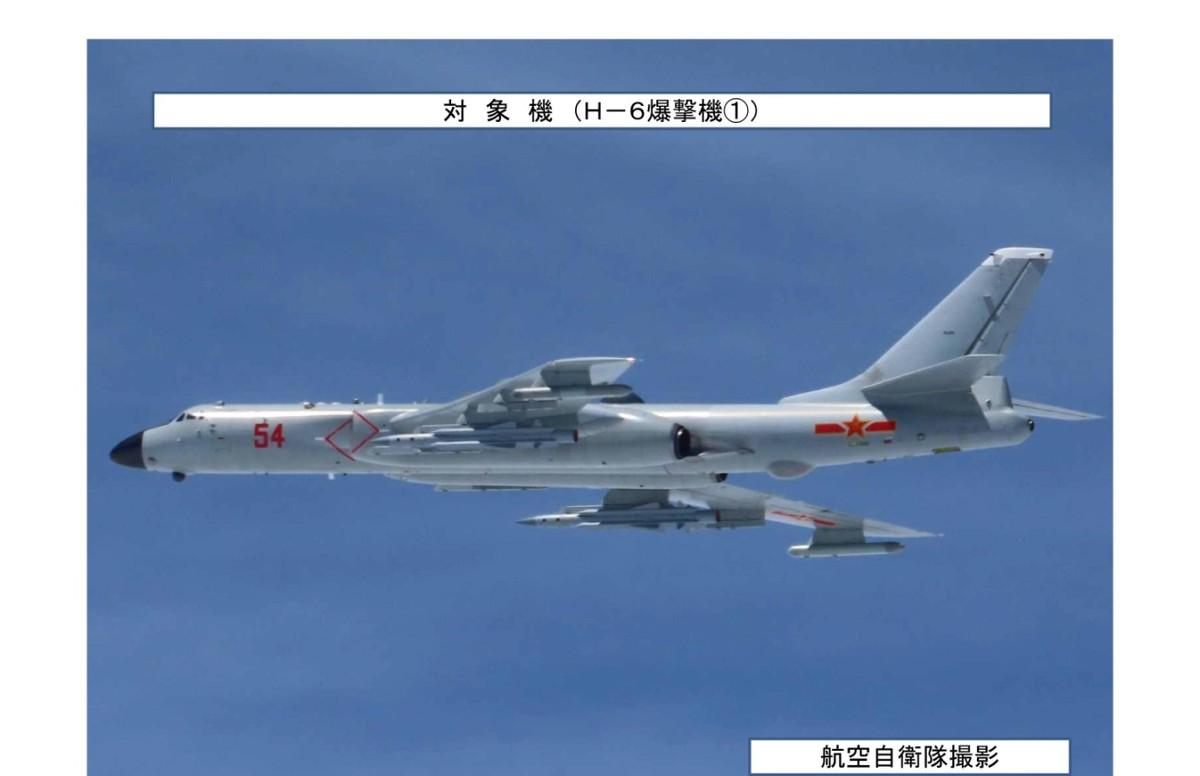On May 18, the Japanese Ministry of Defense, the Ministry of Defense, under the Supervision Department of the Unified Staff, released information about the two Chinese Bomber-6 bombers. The two bombers flew through the East China Sea, over the Miyako Strait between the main islands of Okinawa and Miyako Island, and flew into the Pacific Ocean to reach the Philippine Sea. Then, the two planes returned via the MiyakoKumizu Road again.

This move by two Chinese bombers caused panic on the Japanese side, and the Japanese Air Self-Defense Force had to urgently take off fighters to track them.
Sources pointed out that the two H-6s may have conducted joint exercises with the Chinese Navy's Liaoning aircraft carrier battle group south of Okinawa earlier.
According to photos released by the Japanese Unification Staff Supervision Department, both H-6s are loaded with air-launched Hawks-12 supersonic anti-ship missiles, a heavy anti-ship missile independently developed by China, with a warhead mass of 300 kg, using satellite guidance + terminal active radar to find, with a range of more than 300 kilometers and a maximum speed of nearly Mach 4 at the end.
This is the second time since June 2020 that Japanese live bombers have been photographed passing through the Miyako Strait.
From the performance point of view, this kind of missile caused panic on the Japanese side is understandable, because the Japanese Self-Defense Force is limited by the pacifist constitution and cannot be equipped with offensive weapons, the Japanese Maritime Self-Defense Force ships are equipped with Type 90 and Type 17 are only subsonic anti-ship missiles, and the technical source is the United States "Harpoon" anti-ship missile, which is far inferior to the Eagle Strike-12 in performance.
The Eagle Strike-12, which has both carrier-based, air-launched and shore-based types, has formed a familial and systematic development, and this powerful anti-ship missile is a huge threat to the Japanese Maritime Self-Defense Force.
After world war II, the Maritime Self-Defense Force relied on the technical support of the United States and after decades of development, it has become one of the best maritime forces in the Asia-Pacific region in addition to its offensive capabilities.
Its surface ships and submarine forces were in good service for a short period of service, making the Maritime Self-Defense Force the most powerful of Japan's three services.
Since the beginning of these years, Hai has continuously built new surface ships, including new "Aegis" class destroyers and 30FFM multi-purpose frigates, while promoting the independent development and introduction of new anti-ship weapons.
They looked at the LRASM stealth subsonic anti-ship missile launched by the American company Loma, a new anti-ship weapon developed on the basis of the AGM-158 JASSM, with a range of nearly 900 kilometers, far greater than any anti-ship guided weapon that Japan had previously equipped.
However, due to financial problems, the introduction plan has only been limited to the plans of the Ministry of Defense and the Self-Defense Forces.
The XAXM-3 anti-ship missile independently developed by Japan did not go well, because the design indicators were already behind the times and had to be torn down and restarted.
China, which is regarded by the Self-Defense Forces as the biggest imaginary enemy, has developed much smoother on anti-ship missiles.
In addition to the above-mentioned Eagle Strike 12, there are also the older generation of Eagle Strike 63 and Eagle Strike 83, the Asian Super League combined Eagle Strike 18, and the Dongfeng 21D, which has always been mysterious, and so on.
China's Eagle Strike and Dongfeng missile families constitute the Most Feared Anti-Ship Missile System of the Japanese Maritime Self-Defense Force, and will continue to grow in the foreseeable future.
And our navy will go further in the future, not limited to the western Pacific, only by continuously conducting ocean-going training and having perfect ocean-going combat capabilities can we become a real "blue-water navy."